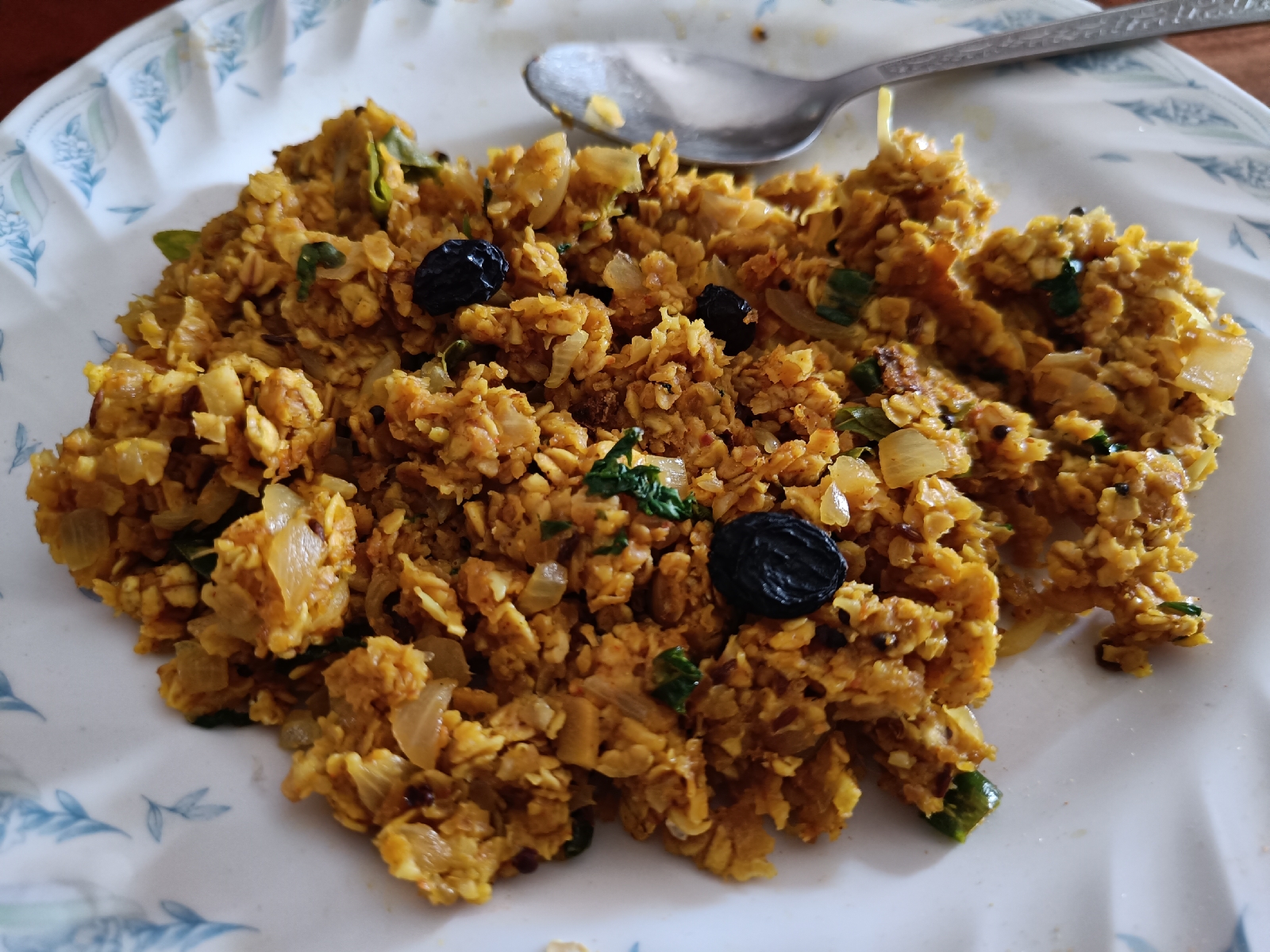I tried Besan Laddu a couple of times earlier but Besan Chakki (burfi) was my yet another first..
I used a recipe provided by my brother Praveen ( and took some.tips from the youtube chanel "rashmi in the kitchen"), whom we respectfully call Dadabhai. He has been making it often and I was tempted earlier too but he never documented the recipe without which I found it difficult to prepare, since I cook new items only when I have instructions to follow, preferably a video. He had made it just 2 days back and using those instructions I began my preparation to make this mithai on the eve of diwali to celebrate.
Preparation time:
(sans final cooling 90-110 minutes).
kneading dough 10-15 minutes,
frying dumplings 10-15 minutes
allowing dumplings to cool 10 minutes
grinding the fried dumplings 10 minutes
cooling of grounded mixture 10 minutes
baking/mixing ghee in the grounded mixture 15 -20 minutes
adding Mawa/condensed milk and cooking 10 minutes
chashni preparation 10 minutes
mixing fried, grounded and "baked" mixture in chashni - 5 minutes
pouring and allowing mixture to cool 1 hour (minimum).
-----
So first the ingadients to make a kilogram of Besan ki chakki..
Besan/gram flour - 500 gm
desi ghee/clarified butter - 250 gm
crystal sugar - 250 gm(against recommended quantity of 600 gm)
condensed milk - 200 gm (recommended was 250 gm of mawa/khoya/milk solid).
Preparation:
To make dough.
pour 500 gm besan into a large bowl and add about 50 gm ghee and mix well.
Now take small quantities of lukewarm water and keep kneading till you get a hard dough like this
you need to be careful with the quantity of water else dough will become soft and will be useless for our task.
Now make small size balls and pressing them in your palm , make dumplings like this. I made 9 but realised 12 would have been better. Make a dent in the middle as shown for uniform heating/frying.
Now take the rest of the ghee, about 200 gm, in a kadhai that can take half of the dumplings. Add more ghee should the quantity is not sufficient for deep frying. Deep fry the dumplings and rotate them so that they get fried from all sides. Keep frying them till they get almost dark brown. This will take about 10 minutes for each lot on medium to low heat.
Once fried, switch off the flame before you take the next lot (should you want to fry all in one lot this is not required but then you will need a large kadhai and more ghee. Now allow the fried dumplings/muthias to cool, you may break them in piece when they are not very hot, in order for fast cooling. After they come to room temp, it may take about 10 minutes, using a grinder-mixture make a coarse powder and using a sieve remove the large pieces that have not been grounded properly.
Put the kadhai with ghee that was used to deep fry dumplings, remove impurities from the ghee occurred during frying, once ghee is simmering hot mix the powdered fried besan and keep mixing for about 15 minutes or till you see its colour changing to darker shade of brown, on low heat. Now add about 250-300 gm of condense milk (if you are not using mawa) and keep mixing for another 10 minutes will the mixture is uniform. Flame should always be low to medium. Now switch off the flame and keep the mixture to cool to room temperature, thisake take 15 minutes.
In the meanwhile, let's prepare chasni (chashni). Take a large Patila/flat and deep cooking utensil (a kind of stock pot or Dutch oven). big enough to take the entire mixture. Pour 250 gm sugar in it and add rom temperature water just sufficient to dip the sugar. Now switch on the flame to low and you will find in about 10-12 minutes the mixture is boiling. Keep checking the consistency, we need chashni of one string( एक तार की चासनी), neither thick, nor soft. Once it reaches the desired consistency, mix a spoon of elaichi powder, quickly mix it well and grasially add the cooked mixture and keep mixing it well.
it is advised that you remove half a cup chashni and add it later. also advised is to add a spoon of sugar in chashni just before you start mixing the cooked mixture to get a coarse texture.
Switch off the flame. Pour the contents into a large flat a about 2" deep plate. Add desiccated coconut ( nariyal ka boora) if you like the taste or decorate it will warq /silver edible foil ( I used neither) and allow the mixture to cool for a couple of hours ( if you are not.in a hurry). I kept it overnight.
Mine came out a bit hard due to incorrect chashni thickness, low quantity of sugar may have a role in that.. but doesn't matter, I am happy with the outcome of my FIRST attempt at it.
Now cut them in small pieces and enjoy.

















































